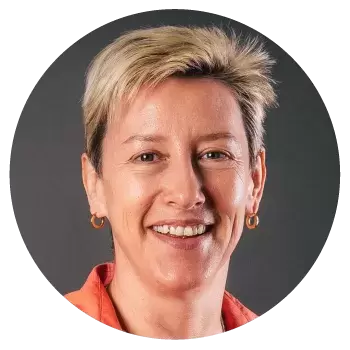Level 2 - Foundation of Rolfing® 10 Series - Intensive
Kathrin Grobelnik has been a Certified Rolfer™ since 2007, Certified Advanced Rolfer…
Level 2 Structural Fascial Bodywork is the second level of education at the Dr Ida Rolf Institute. The course teaches you the principles of Structural Fascial Bodywork to a professional level, based on Dr Ida Rolf’s ‘recipe’.
Step-by-step, you’ll explore the ‘Ten Series’ of Rolfing sessions and practice these with each other. Also you will give two sessions to outside clients. Lessons on ethics and practice building complement the practical part of the course.
What to expect in class
- you’ll be taught by a faculty member of the Dr Ida Rolf Institute Europe
- you're taught using a mix of practical exercises and theory
- you’ll work in pairs or small groups to explore and practice the course content
- you’ll work one-to-one with your client
- you'll get plenty of support as there'll be one teacher for every 10 students and no more than 20 students per class
- there’ll be preparatory reading and homework
- writing a term paper
Timetable
Part 1: Mon. 03.11. - Wed. 26.11.2025 (17 days)
Part 2: Tue. 13.01. - Thu. 05.02.2026 (17 days)
On successful completion, you are qualified for further study towards becoming a Certified Rolfer (level 3).
Teaching hours: daily from 9:00 - 18:00 h, weekends are off.
Payment Details
Down Payment of 500 € due after registration.
Remaining amount due 4 weeks before start.
Installments are possible on request.
Registration
For further information and all forms to register please get in touch with Martina Berger: martina.berger@rolfing.org.
Registration open until 25.09.2025
(Prices, dates, course locations and teachers are subject to change.)
- practitioners of related bodywork disciplines, for example, manual therapists, osteopaths, yoga teachers, Pilates instructors or Gyrotonic teachers – who want to implement Structural Fascial Bodywork in their practice
- people who want to delve into bodywork for their own benefit, for example, if you’re a singer, dancer or actor
- career changers – if you’re coming from a different line of work, this is a great pathway towards a career in bodywork
This is not an entry-level course. You’ll need to complete the level 1 Myofascial Foundation Workshops.
Entry requirements:
- Age 21+
- Registration Form
- Training Agreement (conditions for Level 2 and Level 3)
- CV
- Completed vocational training or University entrance qualification (A-levels)
- First aid course, 1 day (max. 2 years ago)
- Police clearance certificate
- Successful completion of the Level-1 courses. Confirmation from the instructors of the last
courses that all necessary skills were covered in the courses. - Motivation– Letter: Please describe why you want to become a Rolfer®?
(500 words minimum) - Rolfing® 10 series received by a certified Rolfer® or certified SI Practitioner
(last session latest 4 months before Level 2). - A description of your personal experience with your 10 Rolfing® sessions (10 series)
(minimum 500 words)
- manual intervention based on Dr Ida Rolf’s ‘recipe’ of the ‘Ten-Series’ of Structural Integration
- recognising movement and posture patterns
- bodywork techniques that you can implement in your own practice
- ethics around working with clients
- creating a successful practice and business planning
Dig deeper into the curriculum
‘Ten Series’ session 1: Breathing freely in gravity – encountering client, we define pelvis and thorax relationship, shoulder girdles and arms. A touch that provides expansion and rest.
‘Ten-Series’ session 2: Balancing walking – the fascinating relationship of feet, lower legs and their transition to the spine. A touch that differentiates the small structures of the feet, and tracks gravity support in the legs, spine and thorax.
‘Ten-Series’ session 3: Easy sitting, easy standing – front and back stability and volume happen as the lateral axis becomes available. A touch on the lateral structures of the body that contains and supports differentiation of layers
‘Ten-Series’ sessions 4 and 5: Anchoring Into Pelvic Floor And Feet; opening thinner midline of the legs; a sensitive and precise touch that brings awareness and freedom of pelvic core space - Spaciousness and dynamics in the abdominal area, we free the action of the psoas gently addressing core space. A touch that organizes container and content in the front of the trunk
‘Ten-Series’ session 6: A strong, resilient, and supple back – Length And Organization Of The back, continuity of fascia from heels to occiput. A touch that adapts to different muscle tones and provides a sense of continuity.
‘Ten-Series’ session 7: A head fully supported from below and oriented in space. Specific work around the neck and head, mouth and nose included. A delicate and precise touch that opens inner volume, orients into space and frees mobility of the neck.
‘Ten-Series’ sessions 8 and 9: Integrating trunk, spine and extremities. Balancing the girdles, to help stability and flexibility. A touch that combines local work within a global intent. Integrating spine, pelvis and extremities, we enhance the myofascial relationships between centre and periphery.
‘Ten-Series’ session 10: Finding closure that brings the organism to its highest possible level of integration. A touch that serves this purpose.








